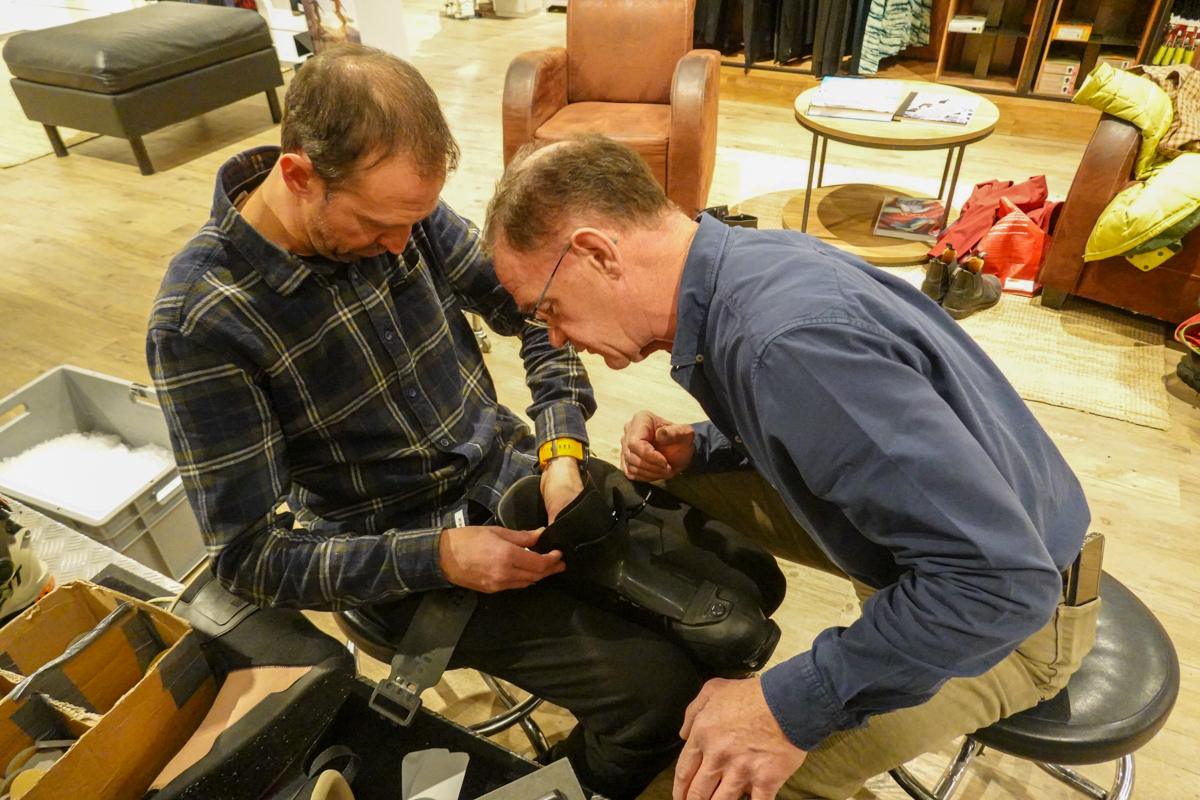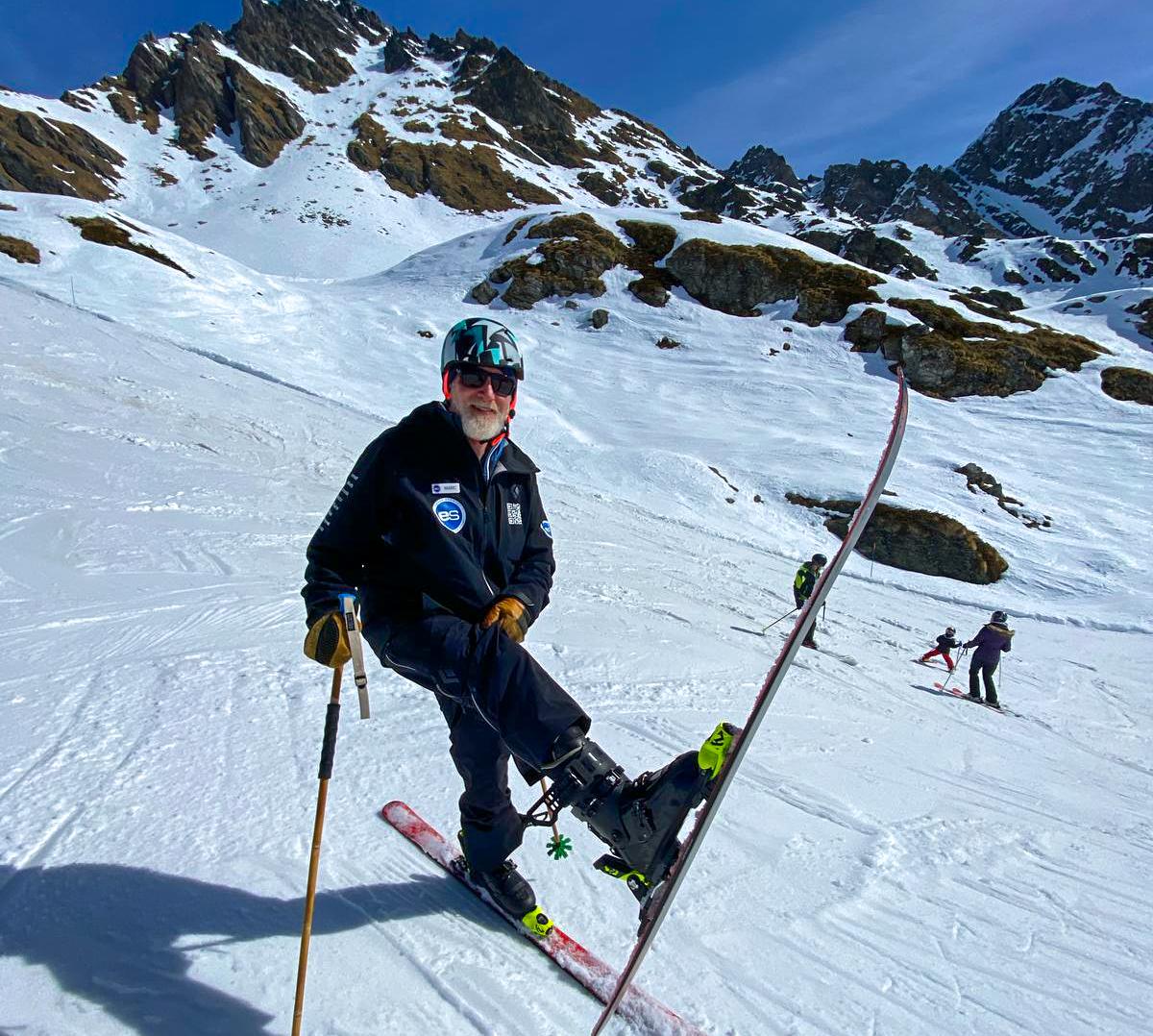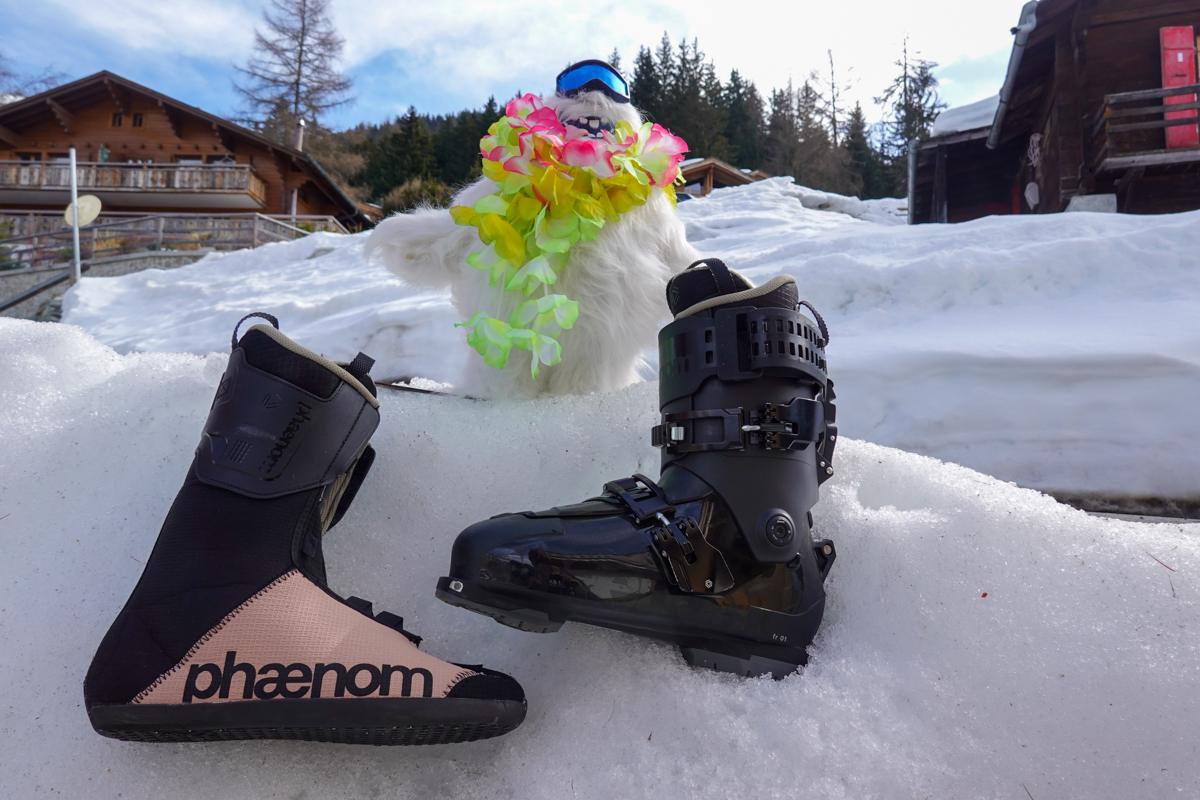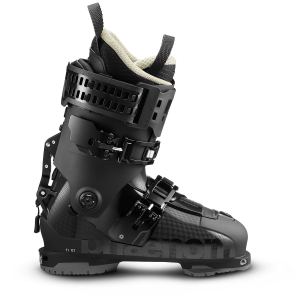Phaenom Footwear FR 01 Boot Review
Phaenom is the new kid on the block for ski boots. Their parent company is Full Stack Distribution, which is the same group that runs Faction Ski. This is a ‘cabrio’ style boot, meaning that the shell of the boot consists of 3 parts: the upper, lower, and the tongue. In a regular 2-piece boot, you have an upper and lower which are bolted together, and the rear or spine of the boot makes up the stiffness. In a cabrio, the stiffness comes from the tongue of the boot.
Testing the Phaenom FR 01 Boot on Snow
I have seen several reviews or more like previews of this boot. None of the other reviews have skied the boot. None of them have worked in the boot. It takes at least few days to break in any boot, and I definitely put in the time on this pair.
A Brief History of Cabrio – The most famous cabrio is the Raichle Flexon. When Bill Johnson won the Olympic downhill on the badass black and red boots, everyone wanted a pair. Soon after, cabrio boots became synonymous with bump and freestyle skiing. As Raichle went out of business, the cabrio boot stayed around in various forms including Full Tilt, K2, Dalbello, and now Phaenom.
A quick note on Boot fitting in General: What do a boot fitter and a proctologist have in common? You want to find a good one or you will be very uncomfortable. Every boot fits differently, and the best boot fitters will find the boots that work for your foot. I know four quality boot fitters (RIP Keith from the Pro Shop in Hunter, NY) and they are amazing people. Don’t cheap out! Boots are your most important piece of equipment. Get them properly fit.
Phaenom Specs
Basics: This is a 2-buckle boot with a super wide power strap. 130 flex – They also come in 120, 110, and 100 flex ratings. Tech inserts for touring 13/15/17 degree forward lean Walk mode GripWalk replaceable soles The liner has a sole you can walk in.
The liner is nicer than most other stock liners. It even has a sole, if you want to walk around in the liner at your favorite apre bar. The tongue is adjustable, you can move it fore and aft to adjust how the boot fits. You can also use the optional laces for a snug fit.
I know these may resemble the old Salomon Ghost boot, and have some similarities to the Armada boot, but the Phaenom is its own design.
Marketing Hype: Meet the FR 01: Featuring recycled materials, walk and touring mechanisms, and innovative technologies, this versatile freeride boot is designed for riders who set their own tracks and follow their own flow. The foam in the liners is recycled and the fabric in the liners is at least 50% recycled. The buckles are all recyclable and repairable.
Who’s This Ski Boot Built For?

The boot is designed for freeskiing. Very few boots made cater to this need. The cabrio design has an even flex for big landings.
Who fits in this boot: There is a person I know who has bunions, bad ones at that. So bad, that several orthopedic surgeons refused to fix them. So bad, that their boot fitter ranks their feet in their top 10 worst feet. New ski boots are hours of pain and tears at the boot fitter’s. This person (gender neutral for anonymity) was able to get their troll-like hooves into the boot with no boot work whatsoever! (with a stock liner) If you have a ‘special’ foot, this could be an option for you.
First Impression: The first thing I noticed was the calf and ankle hold. I have thin calves, and every boot I ever owned, ski or board, I have to crank down my shins. This is the best fitting boot around my calves/shins/ankle and I did not have to make them tight. The lateral support and stiffness were amazing. The toe box is large. My normal boot size is a 28.5, and I was fit with size 28.0.
The first few runs felt good. I was still finding my balance, not a bad thing, just a new boot. I really enjoyed having my calves completely locked in. Lateral movements were fluid, and carving on piste was a blast. I did a short turn clinic with my ski school and put them through the paces. At the end of day one, my feet did not hurt.
So now I started to customize them. The first step was to adjust the lean. My knees were pushed past my toes, so I made the boots more upright. Every screw on the boot is the same size Torx bolt. By taking the 2 bolts off the walk mode lever, I moved the boot back to 13 degrees. It took me longer to find my bike tool with a Torx wrench than to change it.
The next day I had an intermediate level lesson and more time to spend in the boot. The big toe box kept me comfy all day. I never needed to make them really tight and barely adjusted them during the day.
Third day I got a 10-year-old from Texas who just wanted to go fast. We did steeps, bumps, and even a little park. My feet felt good. The toe box is still a little big for me, but as a teaching boot, I am digging it. If you are going to go touring, leave the laces in the liner, they give a little more support on the uphill.
After a few more days I went back to my old boots, Lange XRfree 130 flex. The snow conditions were the same. My BSL (boot sole length) is only 1mm different between the two, and I did not have to move my bindings. The idea was to compare and contrast. Please remember, my personal boots have custom footbeds and liners. For an off-the-shelf boot, liner and footbed, the Phaenom is really nice for a stock boot. If I could just have the upper of one boot and the lower of the other… life would be even better!
Fitting the Boots

Bringing them to the boot fitter Every ski area has its own boot fitters. Nick, the boss and boot fitter at Mountain Air (https://www.mountainairverbier.com/en/), offered to help set the boots up. I wanted to give them a fair evaluation to make sure everything was kosher. After checking my knees’ alignment, he added some foam to the inside of each shell to align them. There is no cant adjustment on the shells.
Nick also showed me how a boot fitter would work with this boot. If you have Zip Fit or other custom liners, the shell can be downsized. Using a Zip Fit liner, he was able to put me in a 26 shell! It was not comfortable, my toes were right into the front of the boot, but he proved the point. With custom liners, I could easily fit into a 27 shell. This would also be narrower and could have been the fit I wanted.
Improvements I am hoping for a narrower model. My foot is not the target shape for this boot. I understand that. I like how it skis, and how the upper supports my leg. Maybe in the future, there could be a narrower lower. – However, there will be a limited edition of the boot, sold through Surefoot, with their custom liner.
Canting – I did add some padding to the interior of the upper cuff, but there is no canting built into the boot.
Power Strap – I have a love/hate relationship with the strap. I love how it feels, and I love the support, (I even have an extra set I use on my snowboard boots.) but, I also like to keep them tight and loosen my boots on long lift rides. This part is the dislike. They are difficult if you always tighten and loosen your boots on every lift ride. There are numbers molded into the straps. The numbers are black on a black background, making it difficult to read. Lastly, there is no easy way to carry them together. I need to keep a carabiner in my pocket.
Does this boot perform? Yes. The heel and calf hold is fantastic. I used the boots for all my beginner and intermediate lessons. I could stand in them all day, the feet felt great. The lateral support was solid. Edge to edge movements felt seamless.
Being completely honest, this is not the boot for me. No, because I don’t like it, it is a great product. Mainly because this boot, with a stock liner, is not designed for my foot shape. I don’t fit into Lee jeans either. It is not a knock against the product or company, it is just a fact.
Pros & Cons
Pros:
-
Excellent Calf/Ankle Hold & Comfort for Wider/Difficult Feet: The boot provides exceptional hold around the calf, shin, and ankle (even for thin calves) and offers significant comfort, particularly for those with wider or uniquely shaped feet (“special foot,” “troll-like hooves”), potentially saving hours of boot fitting. The large toe box also contributes to all-day comfort for the right foot shape.
-
Feature-Rich & Good Performance: It skis well, offering great lateral support, stiffness, and fluid edge-to-edge movement. It also includes desirable modern features like a walk mode, tech inserts, adjustable forward lean, and replaceable GripWalk soles.
Cons:
-
Lack of Built-in Canting Adjustment: The boot shell does not have a mechanism for canting adjustment, requiring boot fitters to use methods like adding foam inside the cuff for alignment.
-
Power Strap Design: While supportive, the wide power strap is difficult and time-consuming to frequently tighten and loosen (e.g., on lift rides), and the adjustment markings are hard to read (black on black).
Overall Impression

If the Phaenom FR 01 Ski Boot ($749.99) fits the shape of your foot (wide and possibly funky), then try it. It could save you hours of boot fitting. If you have a narrow calf, it could be for you. If you are going with custom liners, downsizing this shell could be for you. If you like a little extra space up front and want to be comfy all day, try the FR01. It has all the extra features I like in a boot, walk mode, replaceable soles, adjustable lean, and tech fittings. (I do get days off and get to go skinning.) When you spend fourteen days in a row teaching in a boot, you know quickly if it works. And yes, the FR01 works well.
There is a new player in town. Go try the Phaenom.







